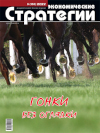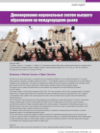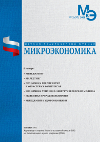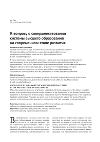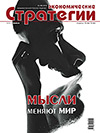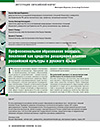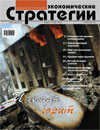Dominance of National Systems of Higher Education
DOI: https://doi.org/10.33917/es-3.183.2022.148-163
The theory of economic dominance in a multilevel economy, developed by Blokhin A.A. and Lomakin-Rumyantsev I.V., has been actively tested by researches on different markets since 2019 — the distribution of players in the markets allows to formulate different strategies for their development. This article is a development of studies devoted to the study of competition in the education market and presents the result of economic dominance of national higher education systems in the international market. This research aims to analyze the subject areas of social sciences and management, for further identifying dominance in the QS ranking.
The sample consists of 58 QS subject rankings for 2018–2021. The main instrument is the SV-matrix (strength/variety). The analysis outlines areas of subject ratings where there is dominance of national educational systems and characterizes its level. In addition, an interpretation of the situation when constructing the SV matrix, where Lind index shows boundary values when determining dominant group size. The SV matrix gives valid results and allows both qualitatively and quantitatively assessing the positions of countries in educational rankings. Analysis using SV-matrix made it possible to identify 8 out of 15 subject areas, in which there is clear dominance and determined positions of Russian universities relative to the dominant group. The hypothesis of United States presence in the dominant group in most areas of social sciences and management was confirmed, however, several subjects were defined, where the higher education system of anther countries were in the lead. The scientific novelty of this study lies in the proposal and testing of a method for assessing the level of dominance of national educational systems in the international education market. The SV matrix allows to analyze the positions of different countries in the international educational space, both in dynamics and in statics (to assess the level of competitiveness of national educational systems); to understand theoretically the level of differentiation of national educational systems in certain subject ratings; to assess the concentration (barriers to enter the rating) and the strength of competition (how strongly the players differ) of subject areas.
Источники:
1. Kireeva N., Slepenkova E., Shipunova T., Iskandaryan R. Competitiveness of Higher Education Institutions and Academic Entrepreneurship. Espacios, 2018, no 23, pp. 15–25.
2. Nefedova A.I. Masshtaby, struktura i tseli eksporta rossiiskogo vysshego obrazovaniya [Scales, Structure and Reason for Export of Russian Higher Education].
Mir Rossii. Sotsiologiya. Etnologiya, 2017, no 2, pp. 154–174.
3. Vorob’eva E.S., Krakovetskaya I.V. Prodvizhenie rossiiskikh vuzov v mirovye reitingi konkurentosposobnosti: tsel’ blizka? [Promoting Russian Universities in the World Ratings of Competitiveness: is the Goal in Sight?]. Kreativnaya ekonomika, 2017, no 5, pp. 521–552.


